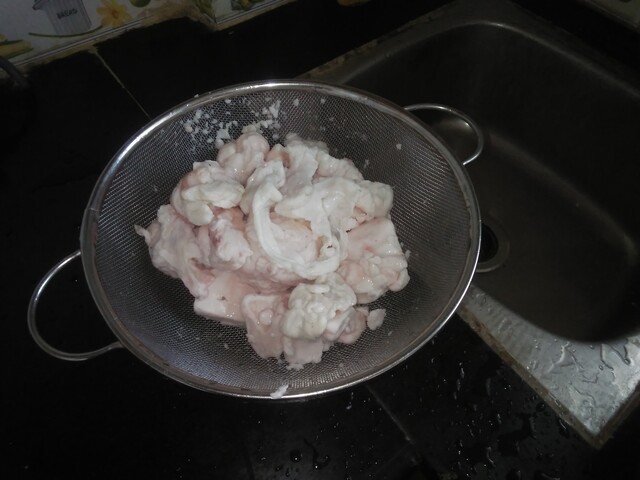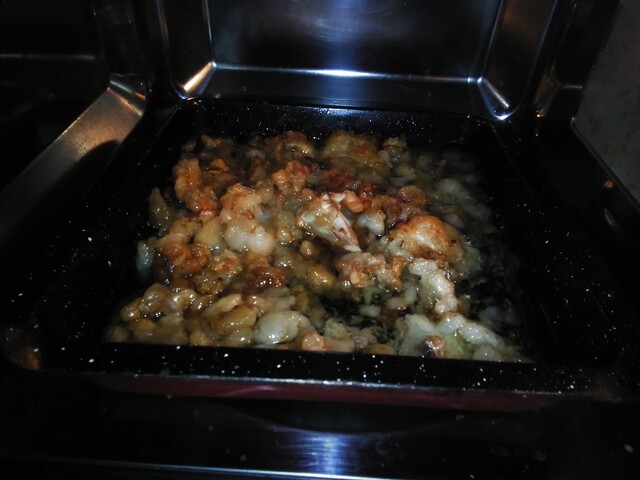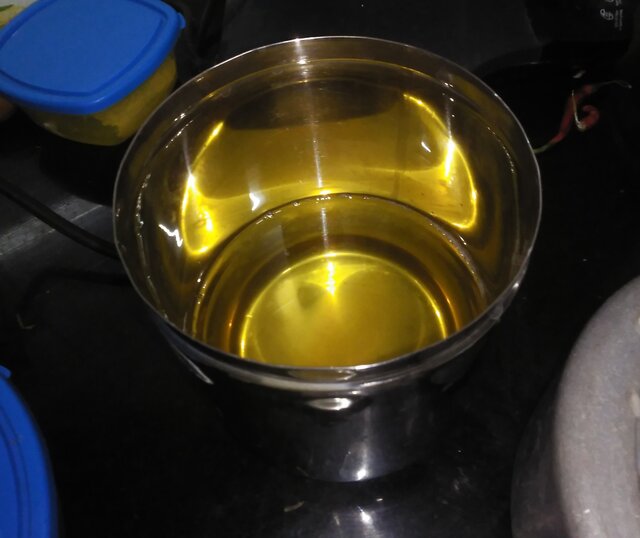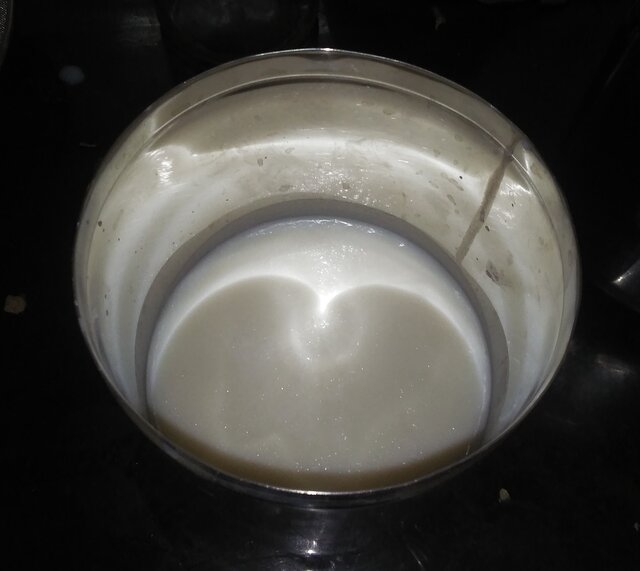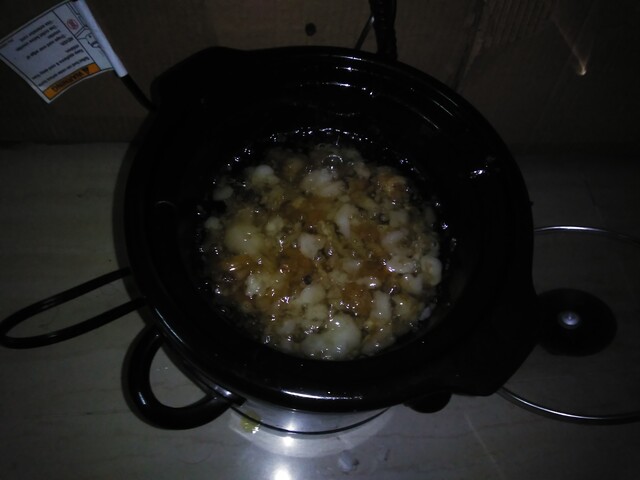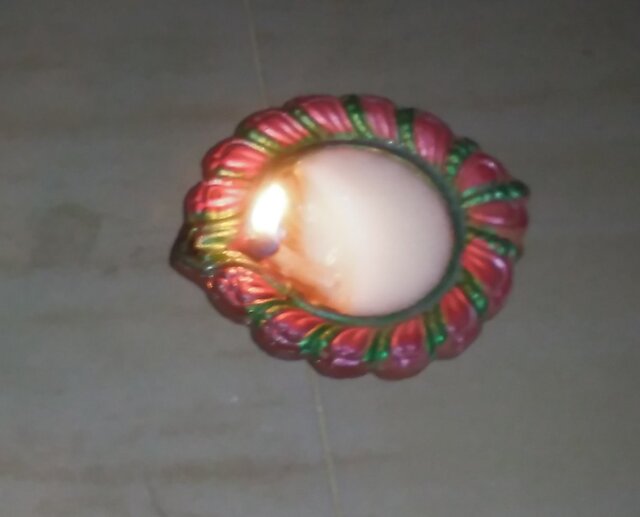Rendering tallow from animal fat using a convection oven or a slow cooker
Published on
Tallow is fat rendered from animal fatty tissue, primarily beef or mutton. The rendering process removes water and other impurities, making it last longer at room temparature withous spoiling. It is similar to ghee, which is obtained by clarifying butter. It remains solid at room temparature. Tallow is also a cooking medium and can replace oil in almost all situations. Tallow can also be used to make soap, skin care products, biodiesel and many more.
I recently increased amount of fat that I consume (low carb diet). Hence I purchase meat with a lot of fat. Recently I purchased about 1.7 kg of mutton fat (0.5 kg was given free of charge because I purchased lot of meat). Part of that was used for cooking, while the remaining I rendered to tallow. Following instructions from various youtube channels, I rendered in two batches – one via a convection-microwave hybrid oven and another via a slow cooker. The prepartion process is as follows:
- Clean the mutton fat. A colander will help.
- Chop it into small 1 cm cubes.
Tallow via oven in convection mode
- Transfer chopped pieces into the oven's tray.
- Use convection mode of heating and set temparature to 120°C. Slightly higher temparture is okay, but don't go too much as tallow could get burnt.
- Once the process starts, there will be liquid seeping out of the fat pieces. That's tallow along with water and other impurities. It will start boiling after a while. It will be initially watery in look and later turn oil-yellow in color as water boils away and the impurities oxidise in heat.
- First the fat pieces become somewhat spongy white and then they shrink and slowly become brownish.
- Stir once in a while - like every 30 minutes.
- When it is about 75% done, it looks like this
- The boiling will slow down and after about 3.5-4 hours (in my 1250 W oven) it is done. Time varies depending on the oven's cooking power.
- Apart from the slow down in boiling, another way to test whether the rendering process is complete is to take out a sample of the tallow and cool it. If the cooled product has only solid candle white tallow, it is more or less done. If there's dirty water, then its not done yet.
- Strain the liquid tallow into a container. After cooling down, the tallow is candle white in color as shown in figure.
- Left over pieces can be used as animal or poultry feed.
Tallow using slow cooker
The crockpot is a slow cooker that has low cooking power - starting from 100 W. This slow cooking power ensures that food does not get burnt easily – this is particularly useful in making tallow or clarifying butter into ghee. I had a 100 W , 2 qt crockpot. I'd recommend this one over oven or stove as it consumes significantly lower energy (About 1 unit vs atleast 1.5 units for oven).
- Transfer cleaned and sliced pieces into the crockpot vessel.
- Turn the crockpot ot high setting and allow it to boil.
- Stir once in an hour.
- Keep the lid of the crockpot open. Else the process will be extremely slow as water won't evaporate eaisily in a closed container.
- Takes about 9 hours (lower if lesser quanity of animal fat put in).
- The progress is same as above. The liquid seeps out of the fat pieces and boils. After 9 hours the boiling slows down and the fat pieces will have shrunk greatly.
- Strain the tallow and pour into a container.
- Use left over pieces as livestock feed or dispose.
I used a total of approximately 1.5 kg of mutton fat totally and got 1.1 kg of tallow.
I've used tallow to cook meat and also to make various vegetable side dishes - including a peerkangai (ridge gourd) glazed carrots poriyal, ladies finger avarai poriyal, which I have described in the next posts.
Tallow can also be used to make candles. Here's a candle I made out of tallow.
